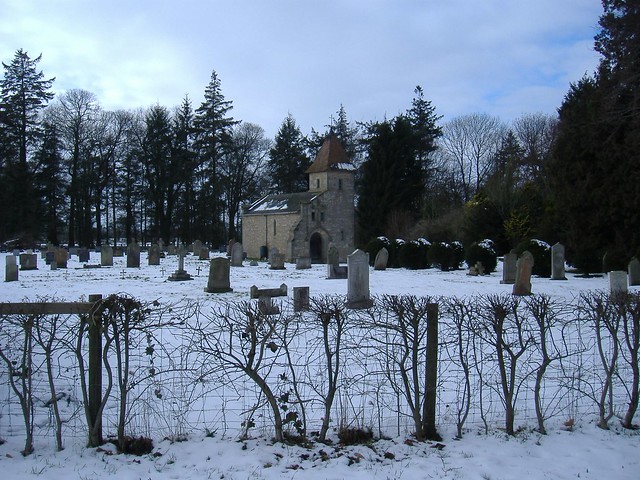A photogenic little chapel tucked away in a lovely secluded spot just south of the village.
The cemetery chapel was built when the churchyard at Brompton's All Saints' Church became overcrowded with graves and was closed to all but one local family. Work on the new chapel cost the princely sum of £175.
Nikolaus Pevsner called the chapel “wonderfully lopsided”. The tower is set slightly askew at the southwest corner, with a peculiar but charming half-gable rising up to meet it. At first glance the facade and the chapel don't quite seem to belong to the same building - and yet the whole thing blends together beautifully. Looking at it, it's striking how natural and confident Moore's handling of gothic themes comes across even at this relatively early stage in his career. Besides his work on the chapel, Temple Moore was responsible for the organ case at All Saints' in the village (1893).
The peaceful corner of the village in which the chapel was built was not always so. In the 1880's a railway line passed very close by - you can see how close from the position of the old station house over the road. The line was opened in 1882 and ran from Seamer, near Scarborough, to Pickering. There was a goods yard with three sidings, a crane, a weighbridge and a cattle dock.
The poet William Wordsworth was married at All Saints' in 1802 to Mary Hutchinson, who lived at Gallows Hill Farm. After the wedding Wordsworth, his new bride and his sister Dorothy walked home to Grasmere in the Lake District, crossing the Hambleton Hills in the dark and continuing on foot up Wensleydale.
Brompton native Sir George Cayley (1773–1857) made the world's first manned heavier-than-air flight at Brompton Dale in 1849. This was more than half a century before the Wright brothers made their famous first powered flight from Kitty Hawk Sands in the USA on 17th December 1903. Another of Cayley's flying machines, which he called a “governable parachute”, took off from Brompton Dale in 1853, carrying Sir George's coachman, who on coming back to earth said, 'I wish to give notice. I was hired to drive, not to fly.'
